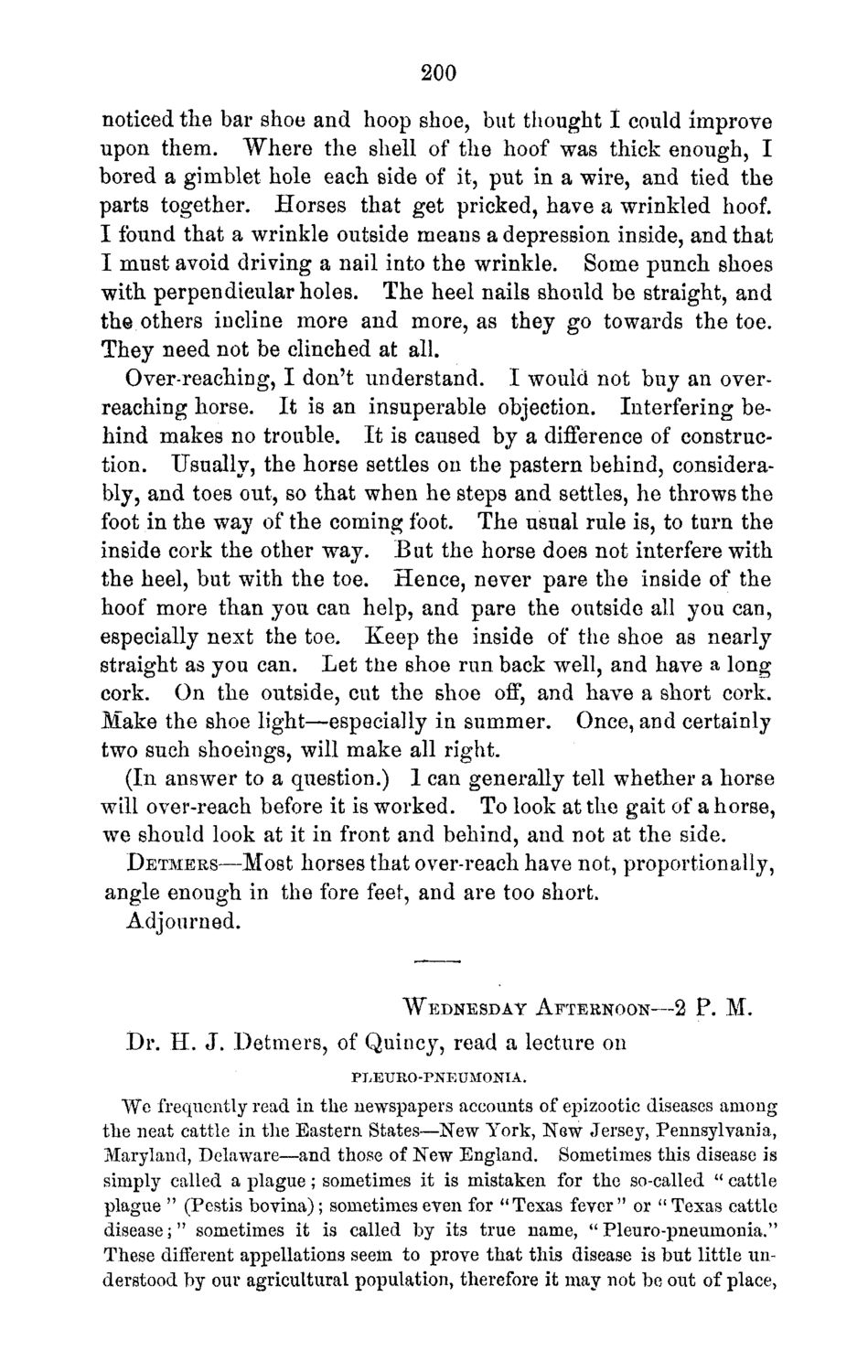| |
| |
Caption: Board of Trustees Minutes - 1870
This is a reduced-resolution page image for fast online browsing.

EXTRACTED TEXT FROM PAGE:
200 noticed the bar shoe and hoop shoe, but thought I could improve upon them. Where the shell of the hoof was thick enough, I bored a gimblet hole each side of it, put in a wire, and tied the parts together. Horses that get pricked, have a wrinkled hoof. I found that a wrinkle outside means a depression inside, and that I must avoid driving a nail into the wrinkle. Some punch shoes with perpendicular holes. The heel nails should be straight, and the others incline more and more, as they go towards the toe. They need not be clinched at all. Over-reaching, I don't understand. I would not buy an overreaching horse. It is an insuperable objection. Interfering behind makes no trouble. It is caused by a difference of construction. Usually, the horse settles on the pastern behind, considerably, and toes out, so that when he steps and settles, he throws the foot in the way of the coming foot. The usual rule is, to turn the inside cork the other way. But the horse does not interfere with the heel, but with the toe. Hence, never pare the inside of the hoof more than you can help, and pare the outside all you can, especially next the toe. Keep the inside of the shoe as nearly straight as you can. Let the shoe run back well, and have a long cork. On the outside, cut the shoe off, and have a short cork. Make the shoe light—especially in summer. Once, and certainly two such shoeings, will make all right. (In answer to a question.) 1 can generally tell whether a horse will over-reach before it is worked. To look at the gait of a horse, we should look at it in front and behind, and not at the side. DETMERS—Most horses that over-reach have not, proportionally, angle enough in the fore feet, and are too short. Adjourned. WEDNESDAY AFTERNOON—~2 P. M. Dr. H. J. Detmers, of Quincy, read a lecture on PLETJRO-PNEUMONIA. We frequently read in the newspapers accounts of epizootic diseases among the neat cattle in the Eastern States—New York, New Jersey, Pennsylvania, Maryland, Delaware—and those of New England. Sometimes this disease is simply called a plague; sometimes it is mistaken for the so-called " cattle plague " (Pestis bovina); sometimes even for "Texas fever" or "Texas cattle disease;" sometimes it is called by its true name, " Pleuro-pneumonia." These different appellations seem to prove that this disease is but little understood by our agricultural population, therefore it may not be out of place,
| |